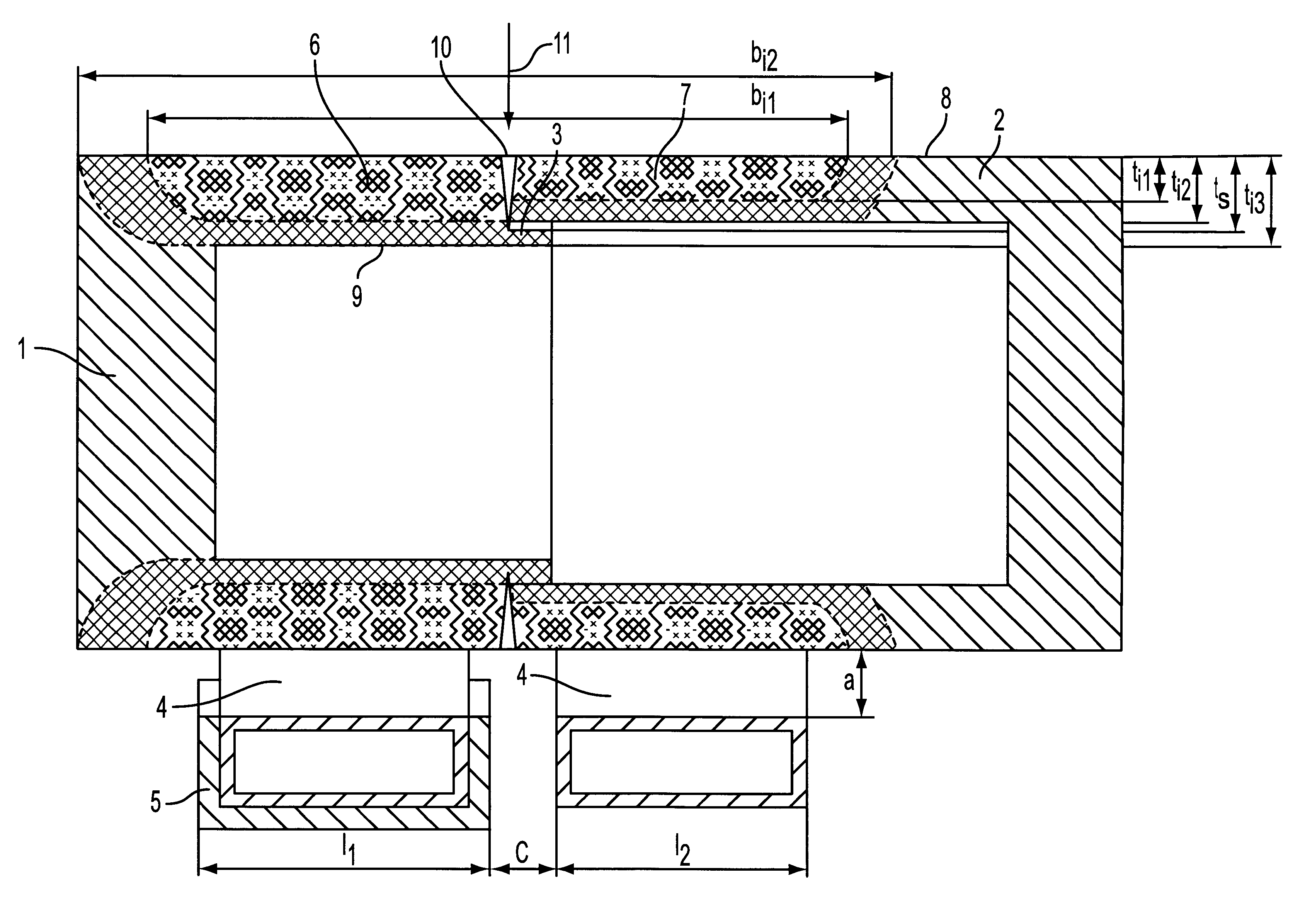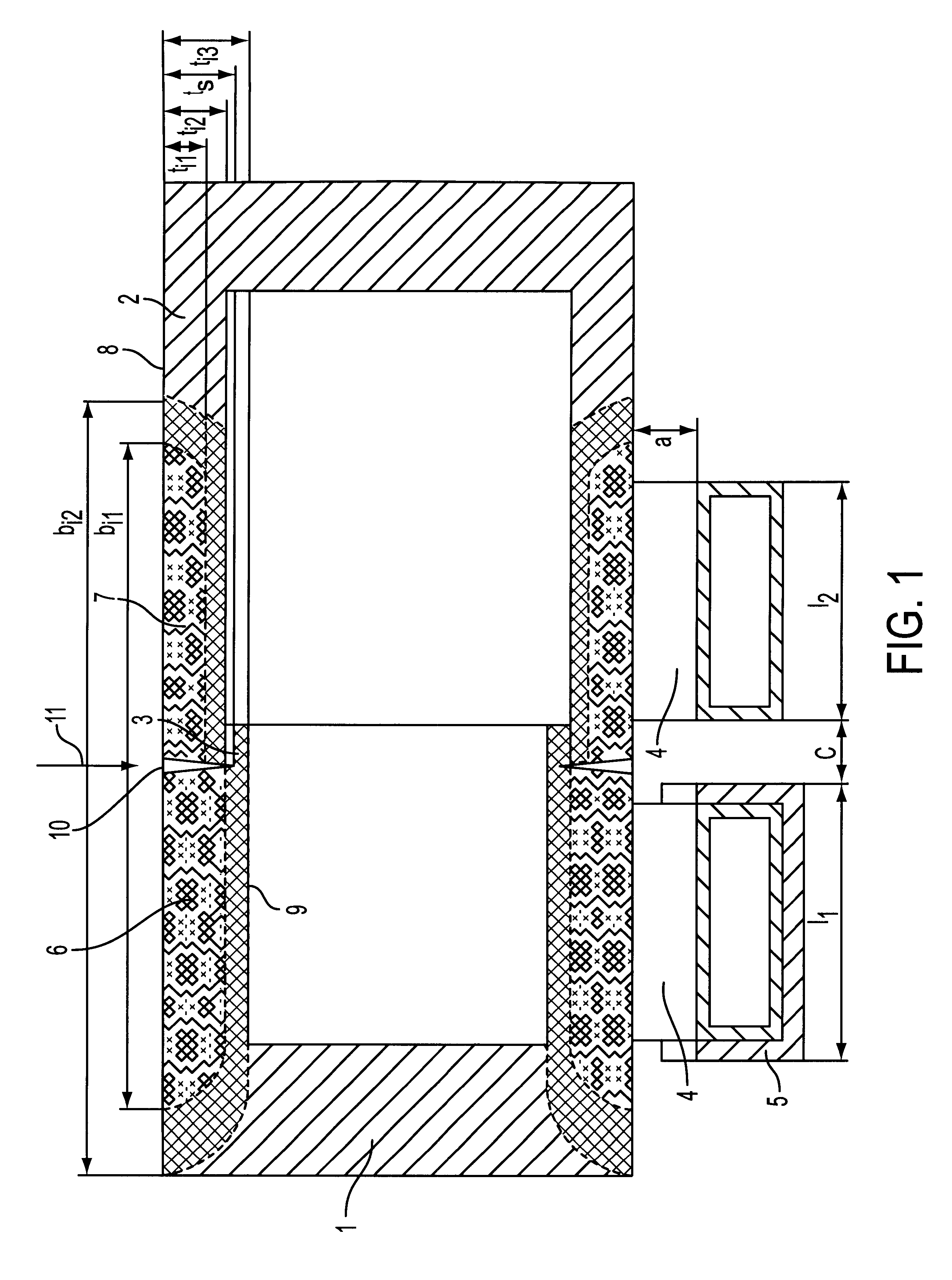Method for beam welding of hardenable steels by means of short-time heat treatment
a technology of heat treatment and hardenable steel, which is applied in the direction of laser beam welding apparatus, heat treatment process control, electric beam welding apparatus, etc., can solve the problems of inability to plastically mitigate the high transient stress occurring, the disadvantage of conventional welding methods in welding speed, component distortion, unit cost and after-treatment expense, and the effect of relatively low heating speed
- Summary
- Abstract
- Description
- Claims
- Application Information
AI Technical Summary
Benefits of technology
Problems solved by technology
Method used
Image
Examples
Embodiment Construction
Two parts 1 and 2 are to be welded in to FIG. 1 with an axial circumferential seam. The external diameter of both parts is 45 mm. The inner diameter of part 2 is 35 mm. Part 1 is provided with seam support 3, which is 3 mm thick. The parts are joined with an overdimension from 0.05 to 0.13 mm. Both parts are made of C45 and are in the normalized state. Their hardness is 225 HV.sub.0.05.
An inductive introduction energy is selected as the preheating method. The induction frequency is 10 kHz. The inductor 4 is a double-winding half-shell inductor. Implementation as a half-shell inductor simplifies automated feeding and removal of the joined parts 1 and 2 into and out of the heating station. The inductor 4 has field amplification sheets 5 on the winding opposite part 1, which, despite the greater wall thickness of the part 1, provides an average temperature T.sub.1 inside the inductive heating zone 6, which is higher than the average temperature T.sub.2 in the inductive heating zone 7. ...
PUM
| Property | Measurement | Unit |
|---|---|---|
| time τA | aaaaa | aaaaa |
| temperatures | aaaaa | aaaaa |
| temperature | aaaaa | aaaaa |
Abstract
Description
Claims
Application Information
 Login to View More
Login to View More - R&D
- Intellectual Property
- Life Sciences
- Materials
- Tech Scout
- Unparalleled Data Quality
- Higher Quality Content
- 60% Fewer Hallucinations
Browse by: Latest US Patents, China's latest patents, Technical Efficacy Thesaurus, Application Domain, Technology Topic, Popular Technical Reports.
© 2025 PatSnap. All rights reserved.Legal|Privacy policy|Modern Slavery Act Transparency Statement|Sitemap|About US| Contact US: help@patsnap.com


